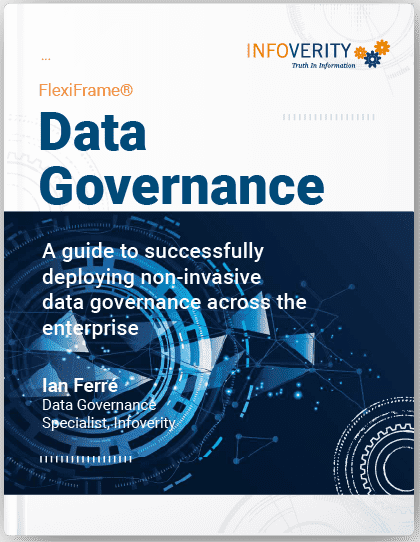Critical IT Sustainment Processes
Given the effort involved to launch an MDM Platform, it can be tempting for companies to think implementation is the most vital step in the process and that the work is done once the system is up and running. Yet, to ensure the MDM Platform operates successfully, businesses need a plan for how to sustain an MDM platform following its launch. This sustainment strategy should ensure users can do as much as possible on their own, without advanced expertise becoming a bottleneck. Users should also have a service process to identify and solve problems, and a system that captures key metrics that help to measure success and incorporates feedback to build future enhancements.
Businesses need a plan for how to sustain an MDM Platform following its launch.
This blog details the necessary operational processes companies must adopt in the post-launch phase to sustain an MDM platform. These processes set the baseline for the maturation process that occurs throughout the MDM and operational services lifecycle, and include:
- Incident management
- Problem management to identify root causes of recurring incidents
- Training programs
- Enhancements and release management
- System and hardware monitoring
- Reporting to share system performance and progress toward creating value
- Clear ownership of data and data products
It doesn’t make sense to launch an MDM Platform and then not take proper care of it. By performing the following tasks, companies can ensure that the maximum value is produced by their MDM implementations.
How to Sustain an MDM Platform
Incident Management
- Establish incident management processes and systems: To capture and track incidents, companies can use a variety of incident management systems such as Jira or ServiceNow. The specific system matters less than the business uses one in the first place. The system provides essential visibility into the system. If project teams solve problems so quickly that they do not log them, companies can’t learn from issues or identify problematic patterns. A commonly missed step following launch is the need to refine alert thresholds so that the support team only receives meaningful alerts, and is not inundated with notices that are eventually ignored.
- Establish robust incident management teams and processes: Companies should strive to create teams with differentiated experience to handle incident management. Newer employees can build their skills and knowledge by triaging easier tickets and incidents. More advanced employees can tackle the more challenging problems. But the work should coexist with a training plan for all team members to ensure constant knowledge and skill growth for everyone. Companies should not reinvent the wheel but rather use existing incident management processes to increase efficiency and reduce risk.
- Choose incident management partners wisely: Companies must devote at least two to three people full-time to incident management. If an organization opts to outsource these responsibilities, the hiring manager should extensively review the resumes and experience of possible candidates to ensure they have the right training.
Problem Management
- Implement problem management: Once companies have incident management systems in place, they must also create robust problem management protocols that look to identify systematic problems within the platform. This is a common ITIL process that seeks to find repeating incidents that may need a development resolution. They should be logged and tracked based on their likelihood to occur again and the severity of their impact if they do so. This allows organizations to address them based on their importance. Problems like these often cause significant user frustration and can ultimately lower adoption if not prioritized and addressed.
Training Programs
- Support ongoing, customized training: Ongoing and customized training is a vital component of a successful MDM Platform. To do this, companies should begin by examining incident reports to target needed training topics. The incidents that surface the most are the basis of what needs to be addressed. Based on these topics, the business should create some self-service materials that end users can access. These should go beyond generic platform materials, and ideally involve mixed media that includes written and video explanations. These trainings should be updated and added to as the system evolves.
- Create a training program for support staff, help desk, and users: In addition to customized training, companies must make sure their training options are also broad enough to meet the needs of all users. Thus, there should be development and training plans for everybody on a team, from support staff to help desk, so they understand the entire system and not just a particular part of it. These plans should gradually build up skill development over time.
Training Programs
- Support ongoing, customized training: Ongoing and customized training is a vital component of a successful MDM Platform. To do this, companies should begin by examining incident reports to target needed training topics. The incidents that surface the most are the basis of what needs to be addressed. Based on these topics, the business should create some self-service materials that end users can access. These should go beyond generic platform materials, and ideally involve mixed media that includes written and video explanations. These trainings should be updated and added to as the system evolves.
- Create a training program for support staff, help desk, and users: In addition to customized training, companies must make sure their training options are also broad enough to meet the needs of all users. Thus, there should be development and training plans for everybody on a team, from support staff to help desk, so they understand the entire system and not just a particular part of it. These plans should gradually build up skill development over time.
Enhancements and Release Management
- Establish a clear mechanism for evaluating prioritization of enhancements: An MDM Platform can’t remain static — companies must plan for and establish clear mechanisms for evaluating prioritization of enhancements. In order to ensure data is complete and relevant, the system must evolve along with the users and the needs of the business. Therefore, organizations should strive for deep business engagement in prioritizing what feature enhancements are going to be completed — and when they will be undertaken. This prioritization should rank enhancements based on the value to the organization. Enhancements that produce the greatest benefits should obviously receive top prioritization.
- Create a process for developing and deploying ongoing enhancements: The enhancement development should leverage a robust process (like scrum) involving active business user feedback to make the business value of the enhancements a reality. Once development is complete, quality release management involves ensuring that when enhancements are deployed, the code has been merged correctly to ensure that the enhancements don’t break the system. The deployment should be accompanied by criteria for when the change should be reversed and a plan for how to complete that alteration.
In order to ensure data is complete and relevant, the system must evolve along with the users and the needs of the business.
Reporting and Monitoring
- Engage in ongoing monitoring and system improvements: It’s impossible to know how well the platform is performing without constant reporting and monitoring. It’s not enough to have just infrastructure monitoring — companies also need application monitoring with notifications if the application goes down. Notifications should also be in place for major functions of the platform, such as if an import or export fails, or a workflow doesn’t process correctly. Companies should also be striving to constantly improve the thresholds in their monitoring so the system gets better over time and alert fatigue is avoided. Thresholds should not be so low that too many notifications are generated to be monitored.
Clear Ownership of Data and Data Products
- Establish clear ownership over data products: Finally, organizations need to establish clear ownership over data products, meaning that individuals who truly understand the business and its needs are placed in charge of applications so the proper support can take place. The person must be able to identify and speak to the value the company is extracting from the platform. This helps to foster wider buy-in. The clearer the product owner is about priorities, the more value the organization can get from the system.
- Establish clear ownership over data products throughout the business: This clear hierarchy of ownership should result in individuals heading customer master data and product master data. Often, the people best suited to these roles are those with e-commerce experience because they know how to use new data productively and can point to the business benefit. Enterprise strategic data product ownership is about owning the whole process of master data management. The clear ownership over data products throughout the business involves owning the specific collections of data that are important like product master data or customer master data. The owners should be able to point out what the data will do for the business.


